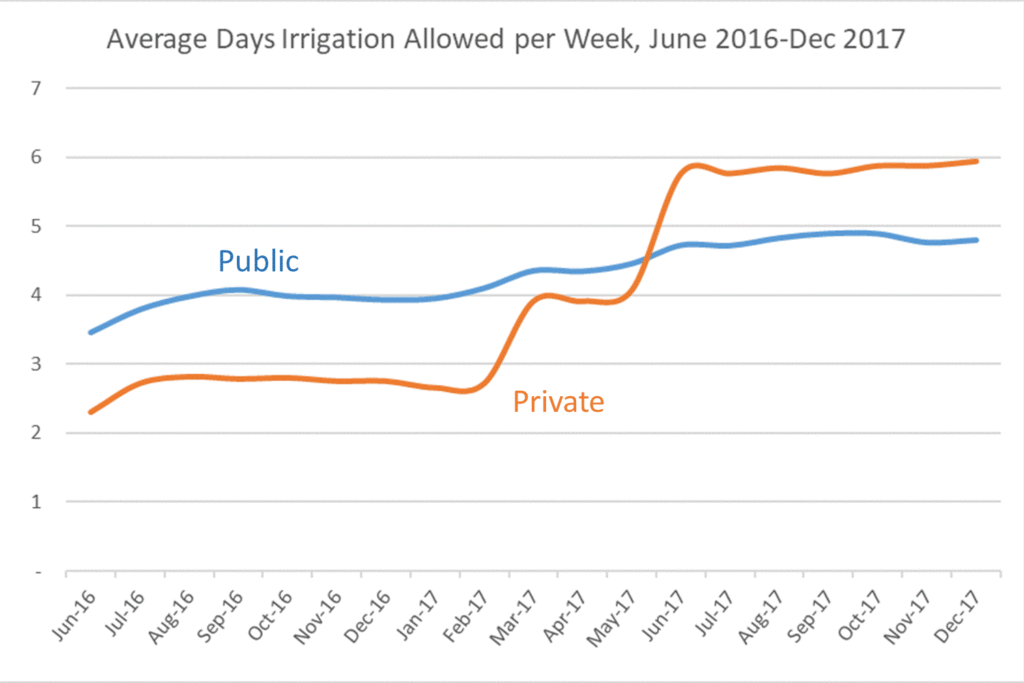A California Surprise, Part 3

California’s private utilities continued to out-conserve public utilities even after the state lifted its mandate.
In 2015 the California State Water Resources Control Board (SWRCB) ordered drinking water utilities to reduce water usage by 25% statewide. As I reported in an earlier post, something surprising happened: compared with local governments, the state’s private, investor-owned utilities imposed stricter water use regulations, were nearly twice as likely to comply with the state mandate, and conserved significantly more water overall. My last post traced this disparity to differences in the institutions that govern water rates in California and the conservation incentives that those institutions create.
In June 2016 the state declared an end to the drought emergency and lifted the mandatory conservation rules, and allowed utilities to set their own conservation targets. Somewhat to the state’s chagrin, 84% of utilities–including nearly all of the state’s private utilities–responded by setting their conservation targets at zero (so much for self-regulation!). Still, conservation has continued, with the state’s utilities still using far less water on average than they did before the drought.
But curiously, the public-private conservation disparity has persisted well after the state mandate ended and most conservation targets dropped to zero.
Enduring differences
Even after the state lifted the rules in June 2016, private utilities continued to impose stricter irrigation restrictions on average compared with public utilities. Through February 2017, public utilities allowed an average of about one more day per week relative to private utilities. In the spring of 2017 the gap began to narrow. In June 2017 the relationship switched: since then, public utilities have been imposed tougher irrigation restrictions. The cause of that switch isn’t clear, and we haven’t really looked into it.

But the really surprising thing is the persistent disparity in overall conservation. This graph plots average conservation (relative to the same month in 2013) for public and private utilities from June 2016 through the end of calendar 2017:

As you can see, overall conservation declined for public and private alike as drought conditions eased. But the really interesting thing here is the consistent difference between public and private sectors: except for February through May 2017, private utilities conserved about 2-3% more on average than public utilities.
While the difference doesn’t seem like much in percentage terms, in a state as large as California, a few percentage points can be enormous in absolute volumes of water. Had public utilities saved at the same rate as private utilities over that period of time, the difference would have been about 52 billion gallons—more water than San Francisco uses in two years. Regression analysis in my forthcoming article coauthored with Youlang Zhang and David Switzer confirms what the graph implies: after accounting for demographics, population density, climatic conditions, source water, and other variables, we find that California’s private utilities out-conserved public utilities in the post-mandate period by a statistically significant average of 2.7%.
Decoupling is a hell of a drug
This consistent public-private difference lends greater weight to the idea that rate decoupling facilitates water conservation for private utilities, and that political constraints hamper public sector conservation. If 2018 holds to form, public and private conservation will converge in the spring and diverge again in the summer and autumn. Look for an update here in early 2019 when full 2018 data are available.
